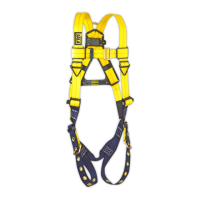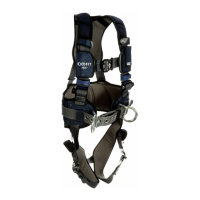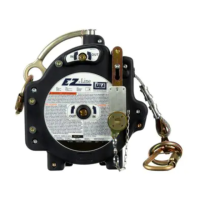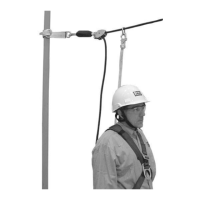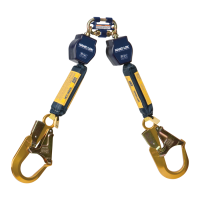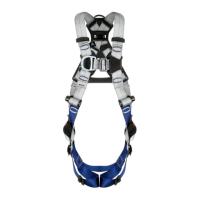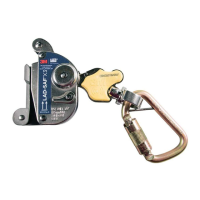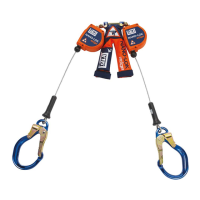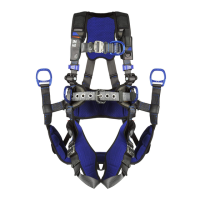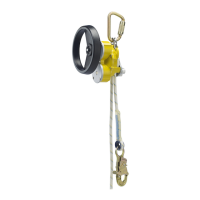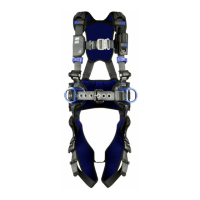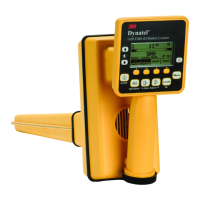7
2.0 SYSTEM CONSIDERATIONS
2.1 RESCUE PLAN: When using the Engineered System and connecting subsystem(s), the employer must have a rescue
plan and the means at hand to implement and communicate that plan to users, authorized persons
3
, and rescuers
4
. A
trained, on-site rescue team is recommended. Team members should be provided with the equipment and techniques to
perform a successful rescue. Training should be provided on a periodic basis to ensure rescuer profi ciency.
The Rescue Plan may be provided by the Certifi ed Installer. In which case, the Rescue Plan will be include in the
System Documentation provided on completion of installation.
2.2 INSPECTION FREQUENCY:
The
Engineered System
must be inspected by the 3M certified Installer after installation and
by the User before each use
5
. Inspection procedures are described in the “Inspection and Maintenance Log” included in this
Installation Manual and the User Manual. Additionally a Periodic Examination must be performed by a 3M Certified Installer
at intervals of no more than one year. See the “Certified Installer Inspection Schedule” for guidelines. Results of each
Certified Installer Inspection should be recorded on copies of the Inspection and Maintenance Log.
Extreme Conditions: Harsh environments, corrosive atmosphere, thermal changes, excessive vibration, prolonged
use, etc.) will require more frequent inspections by the Certifi ed Installer. See the “Certifi ed Installer Inspection
Schedule” for guidelines. Where the Certifi ed Installer determines that extreme conditions require increased frequency
of Periodic Examinations, that requirement will be stated in the System Documentation and System Certifi cate provided
by the Certifi ed Installer.
2.3 AFTER A FALL: If the Engineered System is subjected to the forces of arresting a fall, it must be removed from the fi eld
of service immediately and replaced or recommissioned by a Certifi ed Installer.
2.4 PERSONAL FALL ARREST SYSTEM: Personal Fall Arrest Systems (PFAS) used with the Engineered System must meet
applicable Fall Protection standards, codes, and requirements. The PFAS shall incorporate a Full Body Harness and limit
Maximum Arresting Force (MAF) to the following values:
MAF for CE Systems MAF for OSHA Systems
PFAS with Shock Absorbing Lanyard 6 kN (1,350 lb) 8 kN (1,800 lb)
PFAS with Self Retracting Device 6 kN (1,350 lb) 8 kN (1,800 lb)
Engineered Systems: PFAS used with Engineered Systems must also meet the requirements specifi ed on the
Certifi cate and System Label provided by the Certifi ed Installer.
Table 2 – Certifi ed Installer Inspection Schedule
Type of Use Application Examples Conditions of Use Periodic Examination/
Certifi cation Frequency
Infrequent to Light Use Residential and Commercial
buildings where the system is
mounted directly to structural
steel or masonry.
Good Conditions, Indoors or
Protected Non-Coastal Outdoor
Use, Clean Environments
At least Annually
Commercial Construction,
Manufacturing Facility, Oil and
Gas, Mining, Foundry
Harsh Storage Conditions,
Dirty Environment, Corrosive
Atmosphere, Extreme
Temperatures, Adjacent to or on
Heavy Equipment or Cranes.
Quarterly or when not used
Quarterly, at least prior to
each use.
Moderate to Heavy Use Residential and Commercial
buildings where the system is
mounted directly to structural
steel or masonry.
Good Conditions, Indoors or
Protected Non-Coastal Outdoor
Use, Clean Environments
At least Annually, but
dependent on ability of users
to access system for Pre-Use
Visual Inspection
5
.
Commercial Construction,
Manufacturing Facility, Oil and
Gas, Mining, Foundry
Harsh Storage Conditions,
Dirty Environment, Corrosive
Atmosphere, Extreme
Temperatures, Adjacent to or on
Heavy Equipment or Cranes.
Semi-annually to Quarterly
depending upon severity
of application and ability of
users to access system for
Pre-Use Visual Inspection
5
.
Severe to Continuous Use Residential and Commercial
buildings where the system is
mounted directly to structural
steel or masonry.
Good Conditions, Indoors or
Protected Non-Coastal Outdoor
Use, Clean Environments
At least Annually, but
dependent on ability of users
to access system for Pre-Use
Visual Inspection
5
.
Commercial Construction,
Manufacturing Facility, Oil and
Gas, Mining, Foundry
Harsh Storage Conditions,
Dirty Environment, Corrosive
Atmosphere, Extreme
Temperatures, Adjacent to or on
Heavy Equipment or Cranes.
Quarterly to Monthly
depending upon severity
of application and ability of
users to access system for
Pre-Use Visual Inspection
5
.
3 Authorized Person: A person assigned by the employer to perform duties at a location where the person will be exposed to a fall hazard (otherwise referred to as the
“user for purposes of these instructions).
4 Rescuer: Person or persons other than the rescue subject acting to perform an assisted rescue by operation of a rescue system.
5 Pre-Use Visual Inspection: Systems mounted high above the user or in other locations that are dangerous or diffi cult to inspect may require more frequent Certifi ed
Installer inspections in place of User inspections prior to each use. Where the Certifi ed Installer determines that User Pre-Use Visual inspections should be replace by
additional Certifi ed Installer inspections, that requirement will be stated in the System Documentation and System Certifi cate provided by the Certifi ed Installer.
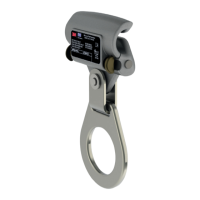
